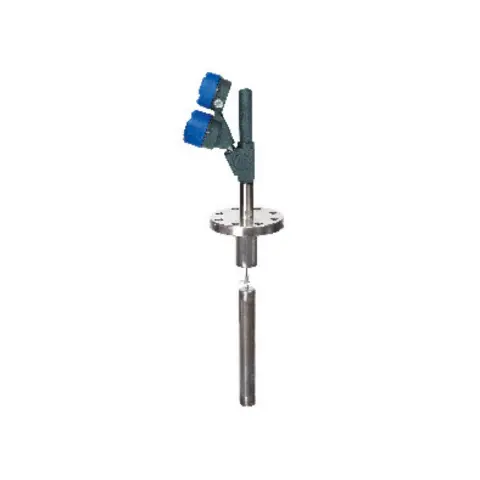Magnetostrictive Level Transmitters
Displacer Level Transmitters & Switches
Electronic displacer level transmitter technology operates by detecting changes in buoyancy force caused by liquid level change. These forces act upon the spring supported displacer causing vertical motion of the core within a linear variable differential transformer.
As the core position changes with liquid level, voltages are induced across the secondary windings of the LVDT. These signals are processed in the electronic circuitry and used to control the current in the 4-20 mA current loop. The enclosing tube acts as a static isolation barrier between the LVDT and the process media.
Displacer switch operation is based upon simple buoyancy, whereby a spring is loaded with weighted displacers, which are heavier than the liquid. Immersion of the displacers in the liquid results in buoyancy force change, changing the net force acting on the spring.
The spring compresses as the buoyancy force increases. A magnetic sleeve is connected to the spring and operates within a non-magnetic barrier tube. Spring movement causes the magnetic sleeve to move into the field of a pivoted magnet, actuating a switch mechanism located outside the barrier tube. Built-in limit stops prevent over stroking of the spring, under level surge conditions.
PROOF-ER® Displacer switch liquid level measurement basics
The purpose of the PROOF-ER is to check the operation of a displacer control without having to raise the level in the tank. This is accomplished by pulling downward on the PROOF-ER cable. This action causes the spring-loaded lever arm to lift the displacer switch actuator, simulating a high or high/high level condition. When the cable is released, the PROOF-ER returns the actuator to its previous position to resume normal operation.

